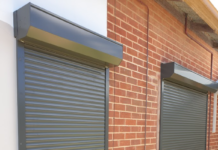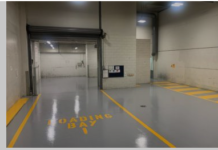Upgrading the exterior of your home is a significant investment that can enhance both its aesthetic appeal and functional performance. Whether you are building a new home or renovating an existing one, coordinating exterior upgrades—from the roof to the siding—requires careful planning and execution. This article explores the key considerations and steps involved in successfully managing these upgrades, emphasizing the roles of professional contractors, including roofers, and the importance of selecting the right materials for new home siding.
The Importance of a Cohesive Design
When planning exterior upgrades, it is essential to create a cohesive design that harmonizes all elements of your home’s exterior. This includes the roof, siding, windows, doors, and any additional architectural features. A well-coordinated design not only enhances curb appeal but also contributes to the overall value of your property.
Choosing a Design Theme
Begin by selecting a design theme that reflects your personal style while considering the architectural style of your home. Popular themes include modern, traditional, rustic, and coastal. Once you have established a theme, you can choose materials and colors that complement each other. For instance, a modern home may benefit from sleek metal roofing paired with smooth, fiber-cement siding, while a traditional home might look best with classic asphalt shingles and wood siding.
Coordinating Between Roofers and Siding Contractors
One of the most critical aspects of upgrading your home’s exterior is ensuring effective communication and coordination between your roofer and siding contractors. Each contractor brings specialized expertise, and their collaboration is essential for achieving a seamless installation process.
Selecting Qualified Professionals
Start by researching and selecting qualified professionals for both roofing and siding projects. Look for contractors with a proven track record, positive customer reviews, and appropriate licenses and insurance. It’s advisable to obtain multiple quotes and compare not just prices but also the quality of materials and workmanship offered.
Establishing a Timeline
Once you have selected your contractors, establish a clear timeline for the project. Discuss how the roofing and siding installations will be sequenced. Typically, the roof should be completed first to prevent any potential damage to the new siding during installation. A well-planned timeline will help minimize disruptions and ensure that the project progresses smoothly.
Regular Communication
Maintain open lines of communication with both your roofer and siding contractor throughout the project. Regular check-ins can help address any issues that arise and ensure that both teams are aligned with the overall vision for your home’s exterior. This collaboration is crucial for coordinating details such as color matching, material compatibility, and installation techniques.
Selecting the Right Materials
Choosing the right materials for your roof and new home siding is vital for both aesthetics and performance. Consider the following factors when making your selections:
Durability and Maintenance
Different materials offer varying levels of durability and maintenance requirements. For roofing, materials such as asphalt shingles, metal, and slate provide different benefits. Asphalt shingles are cost-effective and easy to install, while metal roofing offers longevity and energy efficiency. When selecting new home siding, options like vinyl, fiber-cement, and wood each have their own advantages. Vinyl siding is low-maintenance and resistant to fading, while fiber-cement siding offers durability and a wide range of design options.
Climate Considerations
Consider the climate in your area when selecting roofing and siding materials. For example, if you live in a region with heavy snowfall, a steeply pitched roof and durable materials like metal or slate may be ideal. In contrast, areas with high humidity may benefit from siding materials that resist mold and mildew, such as fiber-cement or treated wood.
Energy Efficiency
Energy-efficient materials can significantly reduce your home’s energy consumption and utility bills. Look for roofing materials with high reflectivity ratings and insulation properties. Additionally, consider siding options that offer better insulation, such as insulated vinyl siding or fiber-cement with added insulation.
Finalizing the Project
As the project nears completion, it’s essential to conduct a thorough inspection of both the roofing and siding installations. Ensure that all work meets your expectations and adheres to local building codes. Address any concerns with your contractors promptly to ensure that they are resolved before final payment is made.
Post-Installation Maintenance
Once your exterior upgrades are complete, implement a maintenance plan to keep your roof and siding in optimal condition. Regular inspections, cleaning, and timely repairs will extend the lifespan of your materials and maintain your home’s curb appeal.
Conclusion
Coordinating your new home’s exterior upgrades, from the roof to the siding, is a multifaceted process that requires careful planning and collaboration among contractors. By selecting qualified professionals, establishing a cohesive design, choosing the right materials, and maintaining open communication, you can ensure a successful outcome that enhances both the beauty and functionality of your home. Investing the time and effort into these upgrades will not only elevate your home’s aesthetic appeal but also improve its long-term value and performance.










